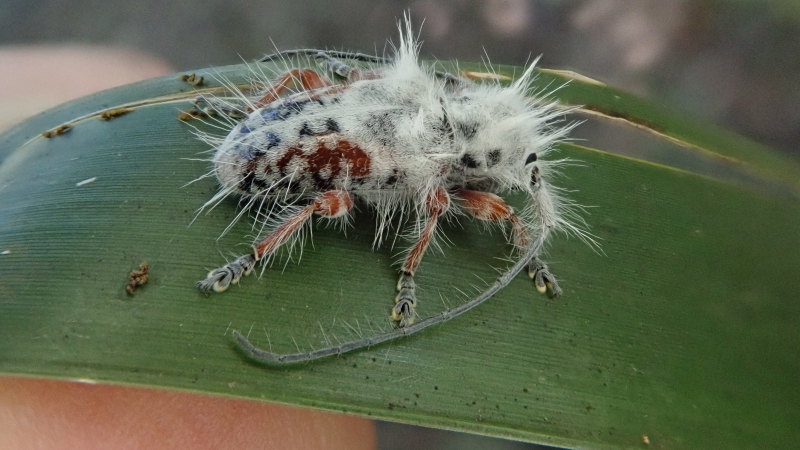That has ruled out any attempt to dissect it and find out more of the creature’s secrets.
There is one early theory about the purpose of its grand white coat: it could be a trick to help it avoid being eaten.
“To potentially prove these theories we have to do a lot more work but the main theory we have is that these long white hairs may mimic an insect that’s been killed by a fungus,” Tweed said.
“There’s a lot of fungi species out there that reproduce by infecting an insect and killing them.
“It could be trying to mimic that so that if a bird or another predator sees it, they think ‘oh no, it’s infected with a fungus, we don’t want to be tasting that’.”
Loading
Tweed said his discovery of such a stunning looking beetle is all the more remarkable given forests near the Lamington National Park have been popular with entomologists for more than a century.
“So it’s puzzling that it hasn’t been found until now,” he said.
The beetle has been given the scientific name Excastra albopilosa.
“We chose the name Excastra for the genus, which is Latin for ‘from the camp’, and for the species name, we decided on albopilosa, which translates to ‘white and hairy’,” Tweed said.
Also Read More: World News | Entertainment News | Celebrity News










